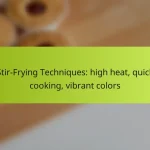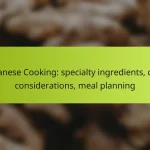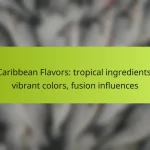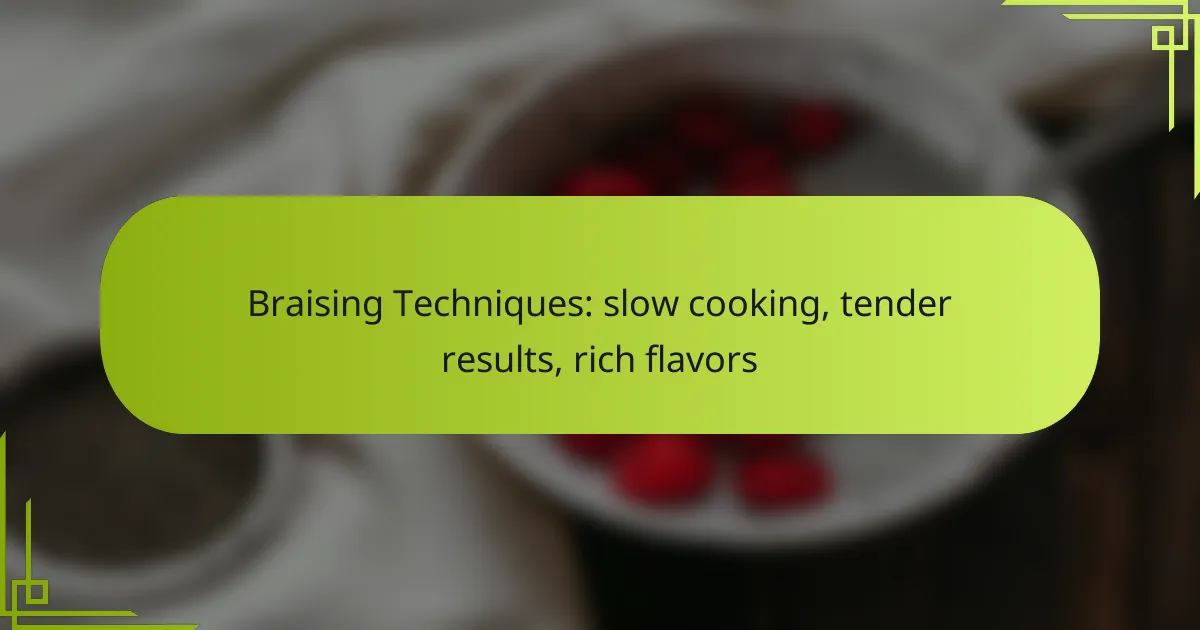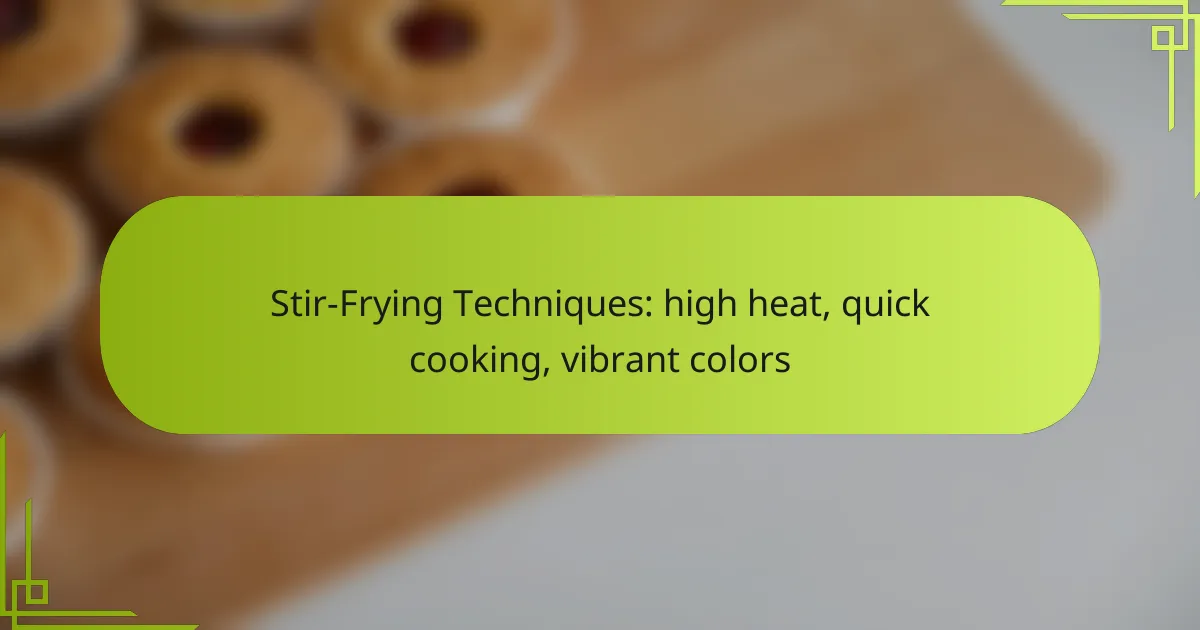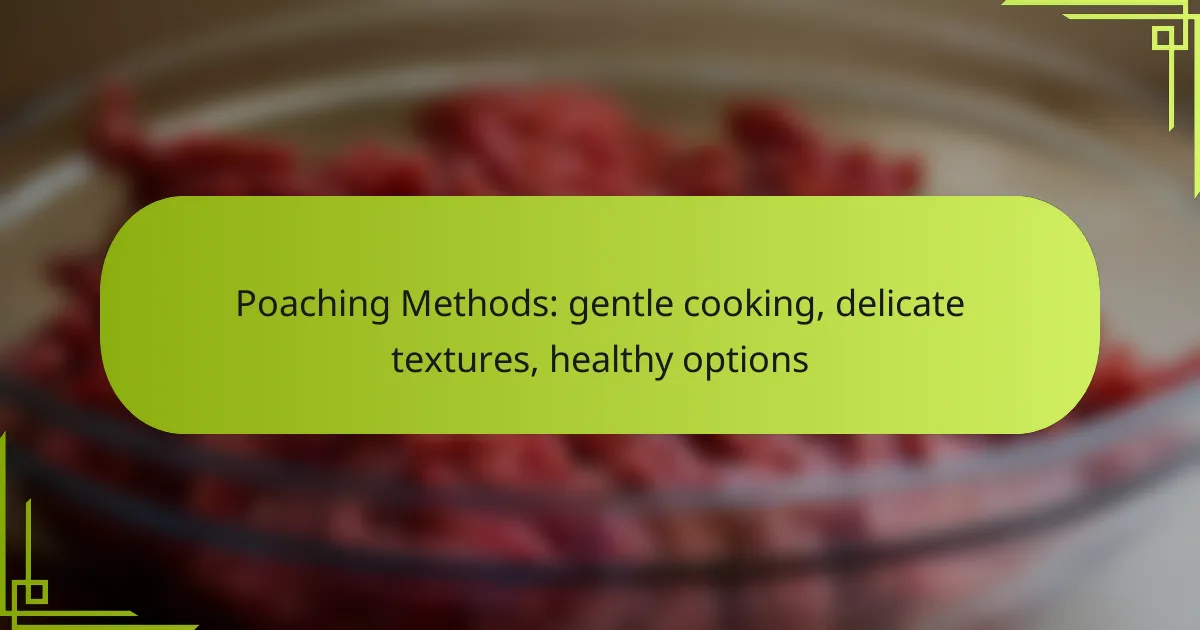Braising is a culinary technique that combines slow cooking with both moist and dry heat, resulting in tender meat and rich, complex flavors. By carefully selecting cuts of meat, using a Dutch oven, and incorporating aromatics, cooks can create dishes where ingredients meld beautifully, enhancing the overall taste. Mastering this method requires attention to detail, as common mistakes can lead to tough textures and bland outcomes.

What are the best braising techniques for tender results?
The best braising techniques focus on slow cooking to achieve tender results and rich flavors. Key methods include low and slow cooking, using a Dutch oven, selecting the right cuts of meat, incorporating aromatics, and controlling moisture levels.
Low and slow cooking
Low and slow cooking is essential for braising, as it allows collagen in tougher cuts of meat to break down, resulting in tenderness. Aim for cooking temperatures around 150-160°C (300-325°F) over several hours, depending on the size of the meat. This method enhances flavor development and ensures even cooking.
Common pitfalls include cooking at too high a temperature, which can lead to dry meat, or not allowing enough time for the flavors to meld. A good rule of thumb is to braise for at least two to three hours for optimal results.
Using a Dutch oven
A Dutch oven is an ideal vessel for braising due to its heavy construction and ability to retain heat. Its tight-fitting lid helps trap moisture, creating a steamy environment that promotes tenderness. Choose an enameled cast iron Dutch oven for even heat distribution and easy cleanup.
When using a Dutch oven, preheat it on the stovetop before adding your ingredients. This initial searing step enhances flavor through caramelization, setting the stage for a delicious braise.
Choosing the right cuts of meat
Selecting the right cuts of meat is crucial for successful braising. Tougher cuts, such as chuck roast, brisket, or shanks, are ideal because they contain more connective tissue, which breaks down during cooking. These cuts are often more affordable and yield rich flavors.
Avoid lean cuts like chicken breast or pork loin, as they can dry out during the long cooking process. Instead, opt for meats with marbling or fat, which contribute to moisture and flavor.
Incorporating aromatics
Aromatics play a vital role in enhancing the flavor profile of braised dishes. Onions, garlic, carrots, and celery are common choices that add depth. Sauté these ingredients in the Dutch oven before adding the meat to build a flavorful base.
Consider adding herbs like thyme, rosemary, or bay leaves for additional complexity. A splash of wine or vinegar can also elevate the dish, providing acidity that balances the richness of the meat.
Controlling moisture levels
Controlling moisture levels is essential for achieving the right texture in braised dishes. Start with enough liquid—broth, wine, or a combination—to partially submerge the meat. This ensures even cooking and prevents drying out.
During the braising process, check the liquid levels periodically. If it appears too dry, add more liquid; if it’s too soupy, remove the lid to allow some moisture to evaporate. Aim for a balance that results in a rich sauce without being overly watery.

How does braising enhance flavors in dishes?
Braising enhances flavors in dishes by combining moist and dry heat, resulting in tender, flavorful meals. This technique allows ingredients to meld together, creating rich, complex flavors that are often more pronounced than those achieved through other cooking methods.
Maillard reaction benefits
The Maillard reaction occurs when proteins and sugars in food react under heat, producing a rich brown color and deep flavors. This reaction is crucial in braising, as it develops a savory crust on meats and vegetables, enhancing the overall taste of the dish. To maximize this effect, sear your ingredients in a hot pan before adding liquid for braising.
For optimal results, aim for a temperature of around 300°F to 350°F (150°C to 175°C) during the initial searing phase. This ensures a robust flavor foundation that will carry through the entire cooking process.
Layering spices and herbs
Layering spices and herbs throughout the braising process is essential for building depth of flavor. Start by seasoning your meat or vegetables before searing, then add additional spices to the braising liquid for a more complex profile. Common choices include bay leaves, thyme, and garlic, which infuse the dish with aromatic qualities.
Consider using a combination of fresh and dried herbs, as each contributes unique flavors. Fresh herbs can be added towards the end of cooking to maintain their brightness, while dried herbs can withstand longer cooking times.
Deglazing for depth
Deglazing is the process of adding liquid to a hot pan to dissolve the browned bits left from searing, known as fond. This step is crucial in braising, as it captures the concentrated flavors that develop during the initial cooking phase. Use a flavorful liquid such as broth, wine, or even vinegar to enhance the taste further.
After deglazing, scrape the bottom of the pan to incorporate all the fond into your braising liquid. This technique not only enriches the sauce but also ensures that no flavor is wasted, contributing to a more satisfying final dish.

What are common mistakes in braising?
Common mistakes in braising can lead to tough meat and lackluster flavors. Key errors include overcrowding the pot, using excessive liquid, and not searing the meat properly before cooking.
Overcrowding the pot
Overcrowding the pot can prevent even cooking and proper browning. When too much meat is added at once, it releases moisture, creating steam instead of allowing the meat to sear. Aim to leave space between pieces, ensuring they can brown and develop rich flavors.
A good rule of thumb is to cook in batches if necessary. This approach allows each piece to achieve that desirable caramelization, enhancing the overall taste of the dish.
Using too much liquid
Using excessive liquid can dilute the flavors and result in a watery dish. Braising is about creating a balance; typically, you should use enough liquid to cover about one-third of the meat. This allows for both steaming and braising, resulting in tender and flavorful outcomes.
Consider using flavorful liquids like broth, wine, or a combination. Adjust the amount based on the size of the cut—larger pieces may require slightly more liquid, but always err on the side of less to maintain richness.
Not searing properly
Not searing the meat properly can lead to a lack of depth in flavor. Searing creates a crust that locks in juices and adds complexity through the Maillard reaction. Ensure the pan is hot enough before adding the meat, and avoid moving it around too much during the initial cooking.
Spend a few minutes on each side until a deep brown color forms. This step is crucial, as it sets the stage for the braising process, enhancing both texture and taste in the final dish.

What equipment is essential for successful braising?
Successful braising requires a few key pieces of equipment to ensure tender results and rich flavors. The right pot, a reliable thermometer, and quality knives are essential for achieving the best outcomes in this slow cooking technique.
Choosing the right pot
The ideal pot for braising is a heavy, oven-safe vessel that retains heat evenly, such as a Dutch oven or a cast iron pot. These materials help maintain a consistent temperature, which is crucial for the slow cooking process.
Consider the size of the pot based on the quantity of food you plan to braise. A pot that is too small may not allow for proper evaporation, while one that is excessively large can lead to uneven cooking. A capacity of around 5 to 7 quarts is often suitable for most braising tasks.
Using a reliable thermometer
A reliable thermometer is vital for monitoring the internal temperature of the meat during braising. This tool helps ensure that the meat reaches the appropriate doneness without overcooking, which can lead to dryness.
Opt for a digital instant-read thermometer for quick and accurate readings. Aim for an internal temperature of around 190°F to 205°F (88°C to 96°C) for optimal tenderness, as this range allows collagen to break down effectively.
Investing in quality knives
Quality knives are essential for preparing ingredients before braising. A sharp chef’s knife and a paring knife will make tasks like chopping vegetables and trimming meat easier and more efficient.
When selecting knives, look for those made from high-carbon stainless steel, as they maintain sharpness and resist corrosion. Regular maintenance, such as honing and occasional professional sharpening, will ensure your knives remain effective for all your cooking needs.

What are the best meats for braising in the UK?
The best meats for braising in the UK include tougher cuts that benefit from slow cooking, resulting in tender textures and rich flavors. Common choices are beef chuck, lamb shanks, and pork shoulder, all of which become succulent and flavorful when braised properly.
Beef chuck
Beef chuck is an ideal choice for braising due to its marbling and connective tissue, which break down during slow cooking. This cut typically comes from the shoulder area of the cow, making it flavorful and economical.
When braising beef chuck, aim for a cooking time of around two to three hours at a low temperature, usually between 150°C to 160°C. This allows the meat to become fork-tender while absorbing the flavors of the cooking liquid.
To enhance the dish, consider adding aromatics like onions, garlic, and herbs during the braising process. Avoid overcrowding the pot, as this can lead to uneven cooking. A good rule of thumb is to use enough liquid to cover about one-third of the meat for optimal results.
